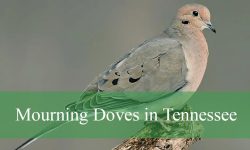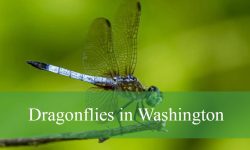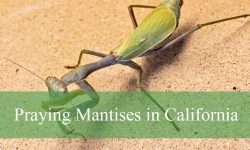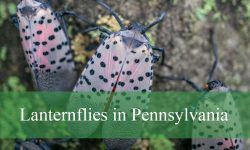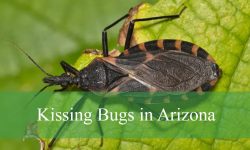Caterpillars are fascinating creatures that play a vital role in the ecosystem. Not only do they serve as food for various predators, but they also eventually transform into beautiful butterflies or moths. However, to reach that stage, they need a steady diet. So, what do caterpillars eat?
In this article, we’ll explore the top plants that caterpillars love, helping you understand their dietary habits and how to support them in your garden.
What Do Caterpillars Eat? An Overview
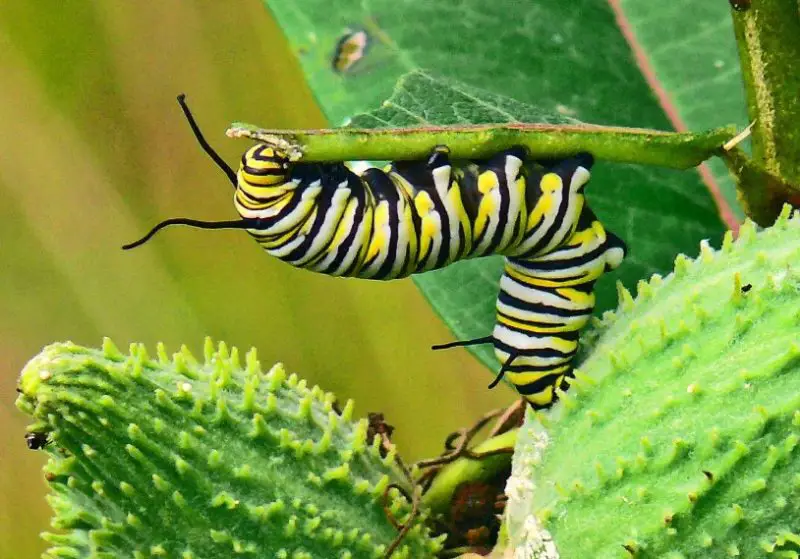
Caterpillars are herbivores, which means they primarily feed on plants. However, not all caterpillars eat the same things. Their diet depends largely on the species and the environment they inhabit. Some caterpillars are generalists, consuming a variety of plants, while others are specialists, feeding on specific types of plants. Understanding what caterpillars eat is essential for gardeners, butterfly enthusiasts, and anyone interested in the life cycle of these fascinating insects.
Why Do Caterpillars Eat So Much?
Caterpillars are in the larval stage of butterflies and moths, a phase dedicated to rapid growth. During this period, they consume large amounts of food to store energy for metamorphosis. A caterpillar can eat up to 27,000 times its body weight before pupating! This intense feeding is crucial for their development into adult butterflies or moths.
Top Plants Caterpillars Love
Milkweed (Asclepias spp.)
Milkweed is one of the most important plants for caterpillars, particularly for the iconic Monarch butterfly. Monarch caterpillars exclusively feed on milkweed, making it their primary food source. This plant contains toxic compounds called cardenolides, which are harmful to most animals but perfectly safe for Monarch caterpillars. In fact, these toxins provide a significant advantage, making the caterpillars (and later the butterflies) distasteful to predators. This natural defense mechanism is a key reason Monarchs are rarely eaten by birds and other predators.
Planting milkweed in your garden is a great way to support Monarch populations, which have been declining due to habitat loss and pesticide use. Not only does it provide essential nourishment for the caterpillars, but it also attracts adult Monarchs looking for a place to lay their eggs. Additionally, milkweed flowers produce nectar that benefits a wide variety of pollinators, including bees and hummingbirds.
Why Caterpillars Love Milkweed:
- High Nutrient Content: Milkweed leaves are rich in nutrients necessary for the rapid growth of Monarch caterpillars.
- Toxic Compounds for Defense: Cardenolides provide protection by making caterpillars and butterflies unpalatable to predators.
- Easily Digestible Leaves: The soft and tender leaves are easy for young caterpillars to chew and digest.
Popular Varieties:
- Common Milkweed (Asclepias syriaca): A robust species with broad leaves and fragrant pink flowers. It grows well in sunny, well-drained areas.
- Swamp Milkweed (Asclepias incarnata): Prefers moist soils and produces clusters of pink or white flowers. It is ideal for rain gardens or wetland areas.
- Butterfly Weed (Asclepias tuberosa): Known for its vibrant orange flowers, this species thrives in dry, sandy soils and is a magnet for various pollinators.
Dill (Anethum graveolens)
Dill is a favorite host plant for the Black Swallowtail caterpillar. These caterpillars are strikingly beautiful with their bright green and black bands adorned with yellow spots. Unfortunately, they are often mistaken for garden pests because of their voracious appetite for dill leaves. However, these caterpillars metamorphose into the stunning Black Swallowtail butterfly, making it worthwhile to share your herbs with them.
Dill belongs to the carrot family, which includes several other plants that Black Swallowtail caterpillars enjoy. Gardeners who grow dill often find it covered in these colorful caterpillars during the growing season. Fortunately, dill is a fast-growing annual herb, so even if the caterpillars strip a plant of its leaves, it can quickly regrow.
Why Caterpillars Love Dill:
- Aromatic Leaves Rich in Essential Oils: The strong scent of dill is highly attractive to Black Swallowtail butterflies.
- Soft Foliage: The feathery, delicate leaves are easy for caterpillars to chew and digest, supporting their rapid growth.
Other Host Plants for Black Swallowtail Caterpillars:
- Fennel: Another aromatic herb that belongs to the same family as dill. Its tall, wispy foliage is irresistible to caterpillars.
- Parsley: A common garden herb with nutrient-rich leaves that provide essential nourishment.
- Carrot Tops: Although less commonly used, carrot greens are also suitable for Black Swallowtail caterpillars.
Passion Vine (Passiflora spp.)
Passion vines are the primary food source for the Gulf Fritillary and Zebra Longwing caterpillars. These vibrant and exotic-looking vines are not only beautiful but also essential for these butterfly species. Passion vines contain toxic chemicals called cyanogenic glycosides, which make the caterpillars and their adult forms distasteful to predators. This chemical defense system is particularly effective against birds.
The intricate, vibrant flowers of passion vines are also highly attractive to pollinators, including bees and hummingbirds. These climbing vines grow quickly, providing plenty of fresh leaves for hungry caterpillars. They also offer excellent shelter, protecting caterpillars from harsh weather and predators.
Why Caterpillars Love Passion Vine:
- Toxic Compounds for Defense: Cyanogenic glycosides provide a chemical shield against predators.
- Nutrient-Rich Leaves: The tender leaves are packed with essential nutrients for caterpillar development.
- Climbing Structure: The vines provide shelter and a safe environment for caterpillars to feed and grow.
Best Varieties to Plant:
- Purple Passionflower (Passiflora incarnata): A cold-hardy species with stunning purple flowers and edible fruit. It is the preferred host plant for Gulf Fritillary caterpillars.
- Blue Passionflower (Passiflora caerulea): This fast-growing vine produces beautiful blue and white flowers and is a favorite of Zebra Longwing caterpillars.
Willow (Salix spp.)
Willows are a preferred food source for several species of caterpillars, including the Mourning Cloak and Viceroy butterflies. These fast-growing trees and shrubs provide abundant foliage, ensuring a constant food supply for hungry caterpillars. The tender leaves are high in moisture content, which helps keep caterpillars hydrated as they feed.
Willows also play a crucial role in supporting local ecosystems. Their flexible branches provide shelter, and their flowers attract a variety of pollinators. Additionally, willows are easy to grow and maintain, making them an excellent choice for caterpillar-friendly gardens.
Why Caterpillars Love Willow:
- Tender Leaves with High Moisture Content: The soft leaves are easy to chew and keep caterpillars hydrated.
- Rapid Leaf Growth: Willows grow quickly, replenishing their foliage even after heavy feeding.
- High Nutritional Value: The nutrient-rich leaves provide essential sustenance for caterpillar growth.
Oak (Quercus spp.)
Oak trees are known to support the highest diversity of caterpillar species. In North America alone, over 500 species of moths and butterflies use oaks as host plants. These majestic trees produce large, nutritious leaves that caterpillars can feast on throughout the growing season.
Oaks are particularly important for species like the Polyphemus Moth, the Luna Moth, and several species of hairstreaks and skippers. The leaves are packed with essential nutrients that promote rapid growth and development. Additionally, the sturdy branches of oak trees provide an ideal place for caterpillars to pupate safely.
Why Caterpillars Love Oak:
- Abundant and Nutritious Leaves: Oak trees produce large quantities of nutrient-rich leaves.
- Large Leaf Surface: The broad leaves provide ample feeding space for caterpillars.
- Shelter and Protection: The dense foliage offers protection from predators and harsh weather.
Nettles (Urtica spp.)
Nettles are the primary food source for several butterfly species, including the Red Admiral and the Painted Lady. Although nettles are known for their stinging hairs, these same hairs provide protection for caterpillars by deterring predators.
Nettles are rich in essential nutrients, making them an ideal food source for rapid caterpillar growth. They also grow rapidly and abundantly in the wild, ensuring a consistent food supply. If planting nettles in your garden, choose a secluded spot to avoid accidental stings.
Why Caterpillars Love Nettles:
- High Nutrient Content: Nettles are packed with vitamins and minerals essential for caterpillar development.
- Natural Protection: The stinging hairs keep predators at bay.
- Rapid Growth and Availability: Nettles grow quickly, providing a reliable food source throughout the season.
How to Grow Caterpillar-Friendly Plants
Creating a caterpillar-friendly garden is a rewarding way to support butterfly populations while adding natural beauty to your outdoor space. By providing the right host plants and creating a safe, nurturing environment, you can attract butterflies to lay their eggs and watch as the caterpillars grow, pupate, and eventually transform into beautiful butterflies. Here are some essential tips to help you get started:
Choose Native Plants
One of the most effective ways to attract caterpillars is by planting native plants that local butterfly species recognize as host plants. Native plants have evolved alongside local insects, making them the perfect food source for caterpillars. In addition, they are well adapted to the local climate and soil conditions, making them easier to grow and maintain.
When selecting native plants, research which butterfly species are common in your area and find out what their caterpillars eat. For example, in North America, Monarch caterpillars rely on milkweed, while Black Swallowtail caterpillars prefer plants from the carrot family, such as dill and fennel. By planting the right host plants, you can attract specific butterfly species to your garden.
Tips for Choosing Native Plants:
- Visit local nurseries or botanical gardens to find native plant species suitable for your region.
- Contact local gardening clubs or extension services for advice on native plants and butterfly gardening.
- Consider planting a variety of host plants to attract multiple butterfly species. This diversity will also create a more resilient and vibrant garden ecosystem.
Avoid Pesticides
Pesticides can be harmful or even deadly to caterpillars and butterflies. Even organic or natural pesticides can negatively impact these delicate insects. To create a safe environment for caterpillars, it is essential to avoid using chemical sprays and other pesticides in your garden.
Instead of pesticides, consider using natural pest control methods that do not harm caterpillars or beneficial insects. For example, encourage natural predators like ladybugs and birds to control aphids and other pests. You can also manually remove pests by hand or use insecticidal soaps that are less harmful to caterpillars.
Alternatives to Pesticides:
- Companion Planting: Planting certain herbs and flowers, such as marigolds and basil, can naturally repel unwanted insects.
- Encourage Beneficial Insects: Attract predatory insects like ladybugs and lacewings that feed on garden pests.
- Hand-Picking Pests: Regularly inspect your plants and manually remove any harmful insects.
If you notice leaf damage, remember that this is a natural part of having a caterpillar-friendly garden. Caterpillars need to eat to grow, and a few chewed leaves are a small price to pay for supporting the butterfly life cycle.
Plant in Clusters
When designing a caterpillar-friendly garden, consider planting host plants in clusters rather than scattering them throughout the garden. Grouping host plants together makes it easier for female butterflies to locate suitable places to lay their eggs. This strategy also increases the chances of caterpillars finding enough food in one area, reducing the risk of starvation.
Clustered planting not only benefits caterpillars but also creates a visually appealing garden design. Grouping plants of the same species together creates bold, cohesive displays of color and texture. It also simplifies garden maintenance, as plants with similar water and sunlight needs are located together.
Tips for Planting in Clusters:
- Plant at least three to five of each host plant species together to create a noticeable cluster.
- Arrange plants by height, with taller plants at the back and shorter plants at the front, for a layered and balanced look.
- Include a variety of nectar plants nearby to attract adult butterflies, ensuring a complete butterfly habitat.
Provide Shelter and Water
Caterpillars are vulnerable to predators, harsh weather, and dehydration. By providing shelter and water sources, you can create a safe and nurturing environment for them to thrive.
Shelter:
Caterpillars need protection from predators such as birds, wasps, and spiders. Planting dense shrubs, small trees, or climbing vines can provide excellent shelter. These plants offer hiding places and protect caterpillars from heavy rain and strong winds. Ground covers and leaf litter also create safe spaces for caterpillars to hide while resting or molting.
For species that pupate on the ground or in leaf litter, avoid excessive garden cleanup. Leaving fallen leaves and plant debris undisturbed allows caterpillars to safely pupate and emerge as butterflies.
Water:
While caterpillars get most of their moisture from the leaves they eat, providing a shallow water source is beneficial, especially in hot or dry climates. Shallow dishes or saucers filled with water and pebbles create safe drinking spots without the risk of drowning. Keep the water clean and change it regularly to prevent mosquito breeding.
Tips for Providing Shelter and Water:
- Plant Dense Shrubs: Use native shrubs or small trees that provide thick foliage for protection.
- Create Leaf Litter: Leave some fallen leaves on the ground to provide hiding spots and pupation sites.
- Offer Shallow Water Sources: Place shallow dishes with pebbles around the garden for easy access to water.
Create a Caterpillar Habitat Year-Round
To maintain a thriving caterpillar population, it is important to provide food and shelter throughout the year. Different butterfly species are active in different seasons, so planting a variety of host plants that bloom and grow at different times ensures a continuous food supply for caterpillars.
For example, early-blooming plants can support spring caterpillars, while late-season plants provide food for caterpillars preparing to overwinter. Including evergreen shrubs or trees also ensures year-round shelter and protection.
Tips for Year-Round Habitat:
- Plant for All Seasons: Choose host plants with staggered blooming periods to support caterpillars year-round.
- Include Evergreens: Evergreens provide consistent shelter and protection from predators and harsh weather.
- Rotate Host Plants: To avoid exhausting food sources, rotate crops or replenish annual host plants each season.
Attracting Adult Butterflies
To complete the butterfly life cycle in your garden, it is important to attract adult butterflies as well. Nectar plants provide essential food for adult butterflies, encouraging them to visit and lay eggs on host plants. Choose brightly colored flowers with shallow, tubular shapes that butterflies can easily access.
In addition to nectar plants, provide sunny basking spots for butterflies to regulate their body temperature. Flat stones or bare patches of soil in sunny areas are ideal. Also, consider creating a mud puddling station by placing a shallow dish filled with moist sand and a pinch of salt. Butterflies use these puddles to obtain essential minerals.
Tips for Attracting Adult Butterflies:
- Plant Nectar-Rich Flowers: Choose flowers like lantana, zinnias, and coneflowers that produce abundant nectar.
- Create Basking Spots: Place flat rocks in sunny locations for butterflies to warm themselves.
- Provide Mineral Sources: Offer shallow dishes with moist sand and salt for mud puddling.
Caterpillar Safety: What to Avoid
Not all plants are safe for caterpillars. Some can be toxic or lack the necessary nutrients. Avoid the following:
- Oleander – Highly toxic to most insects.
- Castor Bean – Contains ricin, a deadly toxin.
- Tomato and Potato Leaves – Part of the nightshade family and are poisonous to most caterpillars.
Benefits of Growing Caterpillar-Friendly Plants
Growing plants that caterpillars love has several benefits:
- Supports Butterfly Populations: By providing food for caterpillars, you help increase the number of butterflies.
- Biodiversity: Attracting a variety of caterpillars promotes a healthy and diverse garden ecosystem.
- Educational Opportunities: Watching the life cycle of caterpillars is a fun and educational experience for children and adults alike.
Frequently Asked Questions (FAQs)
Q1: Can I feed caterpillars store-bought greens?
Some generalist caterpillars may eat greens like lettuce, but most species require specific host plants. It’s best to provide native plants that match their natural diet.
Q2: How do I know if a plant is safe for caterpillars?
Research the species of caterpillar and their preferred host plants. Avoid plants known to be toxic.
Q3: Will caterpillars harm my garden?
Caterpillars do eat leaves, but the damage is usually temporary and worth the benefit of attracting butterflies.
Conclusion: Creating a Caterpillar Paradise
Caterpillars are essential to the ecosystem, and providing them with the right food plants is a great way to support butterfly populations. By planting milkweed for Monarchs, dill for Black Swallowtails, passion vines for Gulf Fritillaries, and other favorite host plants, you can create a garden buzzing with life.
So, the next time someone asks, “What do caterpillars eat?” you’ll not only know the answer but also be ready to provide a haven for these incredible insects.
Would you like more tips on creating a butterfly-friendly garden or need help identifying caterpillars in your area? Feel free to reach out or leave a comment below!
This comprehensive guide on “What Do Caterpillars Eat? Top Plants Caterpillars Love” aims to educate and inspire readers to support caterpillar and butterfly populations by planting the right host plants. Start planting today and watch your garden transform into a vibrant habitat!

